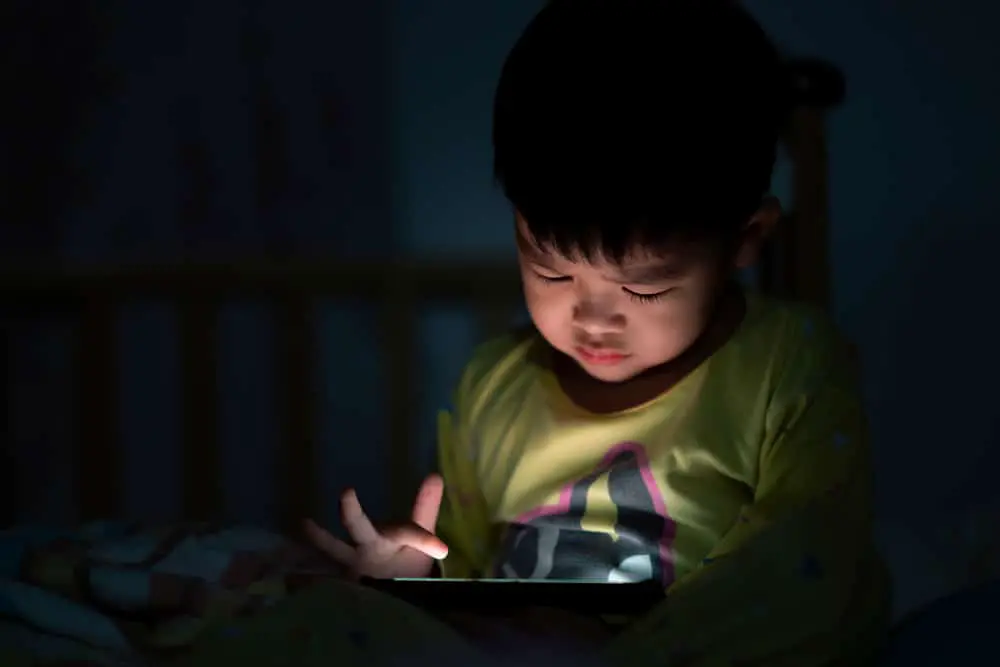Screens are everywhere these days, and even our littlest ones are spending more time glued to devices. But what are the screen time effects on toddler eyes? For many parents, it’s a growing concern. Studies suggest that too much screen time can lead to issues like eye strain, trouble sleeping, and even early nearsightedness in young children.
While screens can be a lifesaver for quick entertainment, it’s helpful to know how they might impact developing eyes and what steps you can take to keep screen time in check. In this article, we’ll break down what the latest research says about screens and toddler eye health and offer some simple tips to help you protect your child’s vision.
Understanding the Screen Time Effects on Toddler Eyes
With screens becoming part of everyday life, it’s no surprise that many parents are concerned about the effects on their children, especially when it comes to toddlers’ eye health. Research is increasingly focused on how screen time impacts the developing eyes of young children, raising some important questions.
For toddlers, whose eyes and vision are still maturing, too much screen exposure could potentially lead to eye strain, disrupted sleep, and even long-term vision issues. The eyes of toddlers are particularly sensitive to prolonged screen use since they are in a phase of rapid growth and development.
That’s why understanding the potential effects is crucial for parents who want to make thoughtful choices around screens. In this article, we’ll look at the latest findings in eye health research and discuss some simple but effective steps you can take to help balance screen use and protect your toddler’s eyes in the process.
The Real Effects of Screen Time on Young Eyes
Research shows that digital eye strain is becoming more common in children, especially with increased screen exposure. Digital eye strain can cause symptoms like dry eyes, blurred vision, and even headaches—symptoms that can appear in toddlers just as they do in adults. One of the main concerns is the impact of blue light emitted by screens, which can alter sleep patterns in toddlers by disrupting melatonin, a hormone that helps our bodies wind down for sleep.
This is why screen time close to bedtime can make it harder for young children to fall asleep and stay asleep. Another significant effect of too much screen use in children is the risk of early myopia, or nearsightedness. Studies suggest that extended screen time might encourage myopia at earlier ages than ever before. By learning about these effects, parents can take proactive steps to create a screen routine that keeps eye health in mind.

Easy Ways to Build Healthier Screen Habits
Building screen habits that support eye health doesn’t have to be complicated. One effective strategy is the 20-20-20 rule: every 20 minutes, encourage your child to look at something 20 feet away for 20 seconds. This quick exercise helps reduce eye strain by giving the eyes a chance to refocus on something farther away. Another valuable habit is spending more time outdoors. Studies have shown that outdoor time plays a crucial role in preventing eye issues like myopia because natural sunlight and distance vision both contribute to eye health.
For toddlers, outdoor play not only helps strengthen vision but also provides a much-needed break from screens, letting them develop physical and social skills. Incorporating these habits into daily routines can make a big difference in protecting your toddler’s eyes without feeling like a big change for you or them.

How to Keep Screen Time Balanced at Home
Creating a balanced approach to screen time at home can go a long way toward supporting your toddler’s overall well-being. Consider designating screen-free zones or specific times, such as family meals or the hour before bed, to give your child’s eyes a regular break. Establishing consistent screen-free times encourages kids to engage in other activities like playing, reading, or interacting with family members—activities that foster healthy development and creativity.
It also helps toddlers develop a sense of routine around screen use, making it easier for them to find enjoyment in other forms of play. Limiting screen time doesn’t have to mean cutting it out completely; it’s more about creating boundaries that balance screen use with real-life interaction and activities. With a little planning, you can ensure that screen time at home supports your toddler’s health and development while still allowing for some digital fun.
Helping Your Toddler’s Eyes Stay Healthy
In today’s world, where screens are everywhere, it’s reassuring to know that small changes can make a big difference in protecting your toddler’s eyes. The potential screen time effects on toddler eyes may seem concerning, but with some easy adjustments to your routines, you can help safeguard their vision.
By being mindful of screen time, practicing healthy habits like the 20-20-20 rule, and ensuring plenty of outdoor play, you’re setting up a strong foundation for your child’s long-term eye health. These simple strategies can support both vision health and a balanced approach to tech. With just a few tweaks, you can feel confident that you’re giving your little one the tools they need to thrive in a digital world while prioritizing their eye health.
Make Sure To Use These Tips
It’s helpful to know that a few small changes to minimize the negative screen time effects on toddler eyes. By keeping an eye on screen time, practicing healthy habits like the 20-20-20 rule, and making outdoor play a priority, you’re helping to support their long-term eye health. Balancing screen use with active play and other activities gives your little one the best start, helping them thrive in both the digital world and beyond.

For more practical tips, lifehacks, and insights on keeping your kids healthy, visit the Health category on Hashtag Parentlife. We share the latest advice for parents on everything from boosting immunity through simple nutrition hacks to stress-free ways to get toddlers to try new foods. You’ll find articles on sleep routines that really work, advice on handling common toddler illnesses without panic, and even natural remedies to ease those little aches and pains.
Plus, we dive into mental wellness with practical ideas on how to build emotional resilience in kids and healthy screen-time habits for the digital age. Our goal is to help you create a supportive, healthy environment where your child can thrive with simple, everyday choices.



